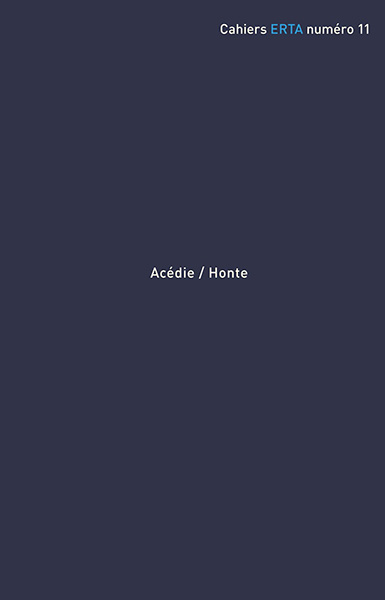Lui aux prises avec la douleur dans l’adaptation de La Faim selon Téo Spychalski
Mots-clés :
Hamsun, Spychalski, hunger, painRésumé
This article intends to confront the literary and stage functioning of Lui, the protagonist of the Knut Hamsun’s novel Hunger (1890) and of the play of the same name created by Téo Spychalski within the theatre company, Groupe de la Veillée, in Montreal, in 1996. Using the terminological concepts developed by David Le Breton, professor of sociology at the University of Strasbourg, I explore various aspects of the notion of pain present in the novel and its stage adaptation. What is particularly interesting for me in both texts is the influence of pain on the existence of a human being, on the life of an individual.
Téléchargements
Références
Beauvoir S. de, Tout compte fait, Paris, Gallimard, 1978.
Deschatelets G., « Knut Hamsun à la Veillée. La Faim », [dans :] Guide Mont‐Royal, Montréal, 20 février 1996, no 8, vol. 56.
Hamsun K., La Faim, Paris, Presse Universitaire de France, 1961.
Le Breton D., Anthropologie de la douleur, Paris, Métailié, 1995.
Le Breton D., Expériences de la douleur. Entre destruction et renaissance, Paris, Métailié, 2010.
Le Petit Robert. Dictionnaire de la langue française, version électronique, HaVaSinteractive, 1998.
Schmeling M., L’écrivain et sa souffrance. De la douleur au texte ; version « De la douleur au texte.pdf » en ligne, consulté le 7 septembre 2016.
Spychalski T., La Faim, texte dactylographié, document interne du Groupe de la Veillée de Montréal, 1996.
Vigeant L., « La Faim », [dans :] Cahiers de Théâtre. Jeu, juin 1996, no 79.
http://www.la‐definition.fr/definition/douleur, consulté le 7 septembre 2016.
http://www.painstory.org/fr/french‐resources/quest‐ce‐que‐la‐douleur, consulté le 7 septembre 2016.
http://www.institut‐upsa‐douleur.org/patients/comprendre‐douleur/aspects‐psychologiques‐de‐la‐douleur, consulté le 8 septembre 2016.

 Revues scientifiques académiques
Revues scientifiques académiques





